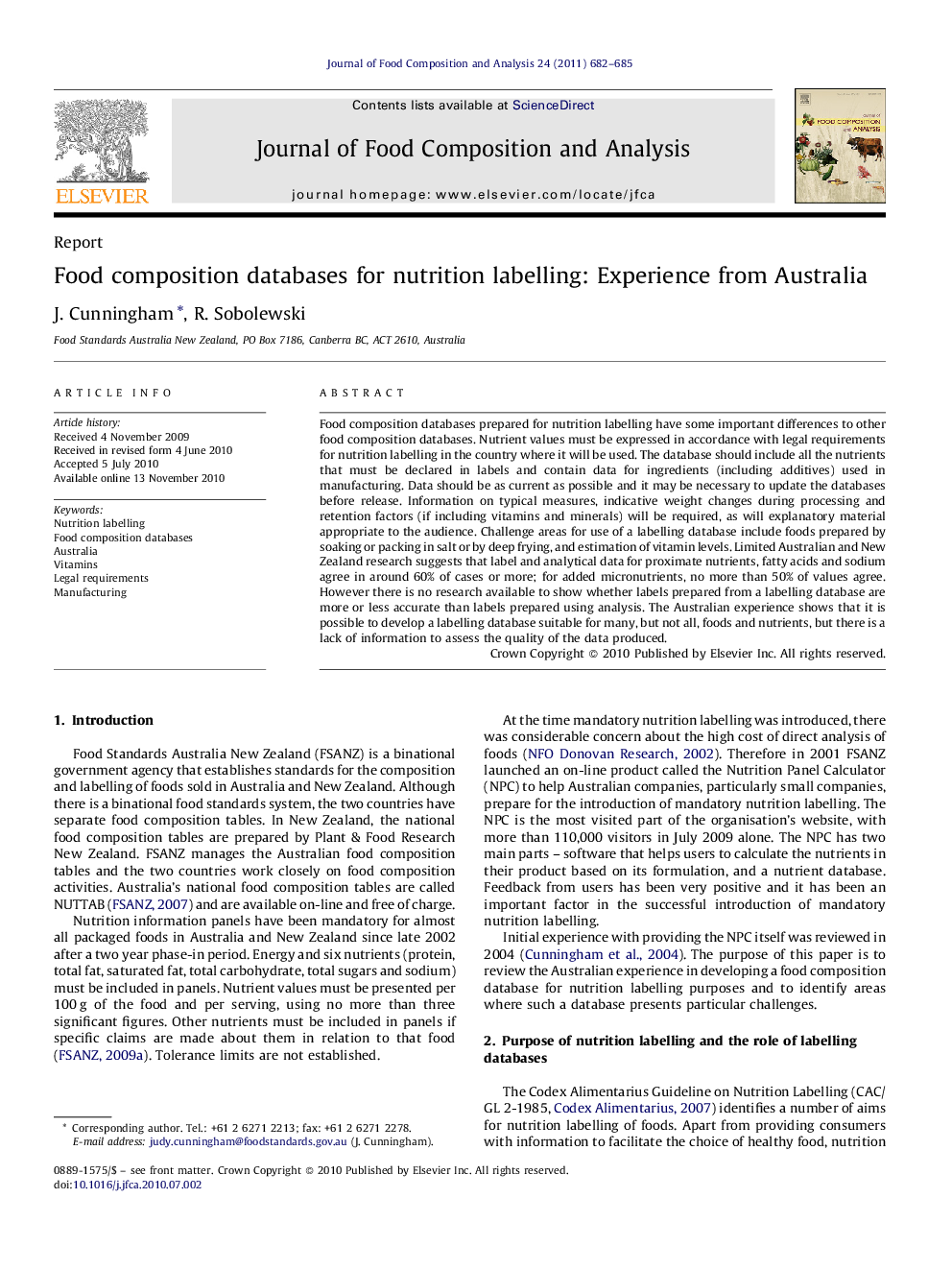| Article ID | Journal | Published Year | Pages | File Type |
|---|---|---|---|---|
| 7621005 | Journal of Food Composition and Analysis | 2011 | 4 Pages |
Abstract
Food composition databases prepared for nutrition labelling have some important differences to other food composition databases. Nutrient values must be expressed in accordance with legal requirements for nutrition labelling in the country where it will be used. The database should include all the nutrients that must be declared in labels and contain data for ingredients (including additives) used in manufacturing. Data should be as current as possible and it may be necessary to update the databases before release. Information on typical measures, indicative weight changes during processing and retention factors (if including vitamins and minerals) will be required, as will explanatory material appropriate to the audience. Challenge areas for use of a labelling database include foods prepared by soaking or packing in salt or by deep frying, and estimation of vitamin levels. Limited Australian and New Zealand research suggests that label and analytical data for proximate nutrients, fatty acids and sodium agree in around 60% of cases or more; for added micronutrients, no more than 50% of values agree. However there is no research available to show whether labels prepared from a labelling database are more or less accurate than labels prepared using analysis. The Australian experience shows that it is possible to develop a labelling database suitable for many, but not all, foods and nutrients, but there is a lack of information to assess the quality of the data produced.
Keywords
Related Topics
Physical Sciences and Engineering
Chemistry
Analytical Chemistry
Authors
J. Cunningham, R. Sobolewski,
